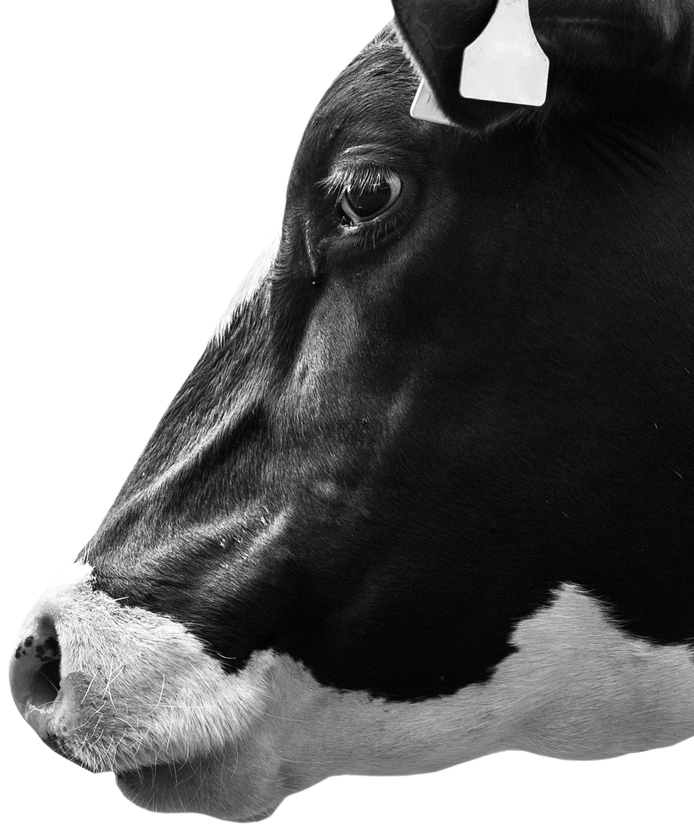Ben and John Oakley, Whitchurch, Cheshire
A commitment to producing high-quality milk while focusing on more precise use of home-grown forages, and particularly the utilisation of inputs such as protein, has earned one Cheshire-based family a place in the final six of the 2024 NMR/RABDF Gold Cup.
Father-and-son team John and Ben Oakley manage a herd of 195 mainly Holstein cows, plus a few crossbreds, and 115 followers, with the help of one full-time staff member.
The unit comprises 100 hectares, which supports summer grazing and forage production for the autumn-calving herd.
Beginning in August, more than 80% of cows calve by the end of October. The herd is housed during the winter and fed a partial mixed ration comprising grass and maize silage, fodder beet, and a 25% protein blend. An 18% protein cake is fed to yield through the parlour.
The focus on this unit is to increase milk from home-grown forage and improve crude protein use in the diet, with the aim of reducing levels fed in concentrates to between 16% and 18% while, at the same time, maintaining milk yield and quality.
“Reducing crude protein in our concentrate feed is a priority,” says Ben. “We take regular grass samples to monitor protein levels in the forage and then balance it accurately with concentrates. We want to drive up protein levels in our forages to allow us to drop levels in the concentrate feed. This will help to reduce our carbon footprint and improve the herd’s efficiency.”
The Oakleys are making good progress here. Milk from forage, which is now at 51%, has increased by almost 1,000 litres in the 12 months to March 2024, while concentrate use per cow has reduced by 15% and is currently 0.26kg per litre.

John and Ben Oakley
Another priority is to reduce their electricity usage by adopting heat recovery systems and possibly solar panels.
Breeding plans aim to produce more efficient cows that are good foragers and can covert this part of their diet into milk while also producing their body weight in milk solids. Milk is sold to a local cheesemaker, so constituents are important. The current production is 4.63% butterfat and 3.58% protein.
With a block-calving herd fertility is important and they achieve a 40% pregnancy rate.
Attention to detail starts in the calf house, with emphasis placed on hygiene. Sheds are steam cleaned and disinfected before every batch of calves and, when possible, rested. Feeding equipment is washed thoroughly twice a day. “Just as you would if you were feeding a baby,” adds Ben.
Calves are fed colostrum as soon as possible after birth, and accuracy with milk volumes and temperatures is a priority.
Ben also stresses the importance of the transition diet of pre-calving cows when it comes to calf health. “If the diet is well balanced with all the necessary minerals calves will thrive and hit the ground running wanting to feed straight away. If we get this right, calf management thereafter is much easier.”
This attention to detail continues into the milking herd, with lameness and body condition routinely scored. A professional foot trimmer tends to cows once a year, which helps prevent any lameness issues. “But if we spot a lame cow, we treat her straight way,” adds Ben. “Swift intervention is key, and issues are usually resolved quickly.”
The same quick action is taken with any cases of mastitis, which are few and far between, and any cows that have repeat cases are culled. Aggressive cases are treated with antibiotics and anti-inflammatory, and Uddermint, but less serious cases can usually be cleared up with applications of Uddermint.
Milk records, alongside routine testing and advice from their vet have been used to develop the herd’s selective dry cow therapy plan, and to maintain a robust Johne’s disease control plan.
Herd expansion is planned and will be from home-bred heifers in this closed herd. They have recently taken on a neighbouring block of land that will allow them to increase cow numbers to 240 and rear youngstock – both dairy and beef calves – on site.
Plans are also in place for a new slurry store and shed to accommodate the expanding herd. As much of this work as possible will be done in house to control costs.
“We’ve taken on a relief milker for six milkings a week,” says Ben. “This frees up time to do work outside the parlour, and they will provide some of the extra labour required to manage a larger herd.
“A bigger herd and looking at other diversification opportunities, which we will explore, will help to future proof the business. At the same we’ll keep improving herd efficiency through improved feeding, fertility and cow health.”
Key facts
- Cow numbers: 195 cows and 115 followers
- Milk yield: 9,046kg, 4.63% fat and 3.58% protein
- Somatic cell count:122,000 cells/ml
- Mastitis rate: 8 cases in 100 cows
- Calving interval: 390 days
- Age at first calving: 24 months
- Milk buyer: Belton Farm
